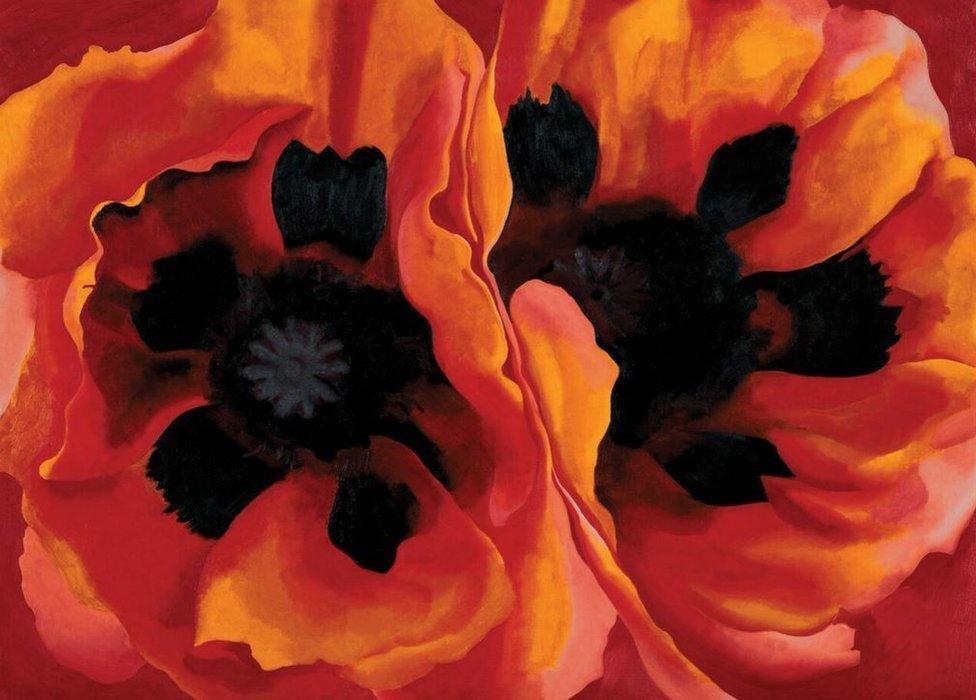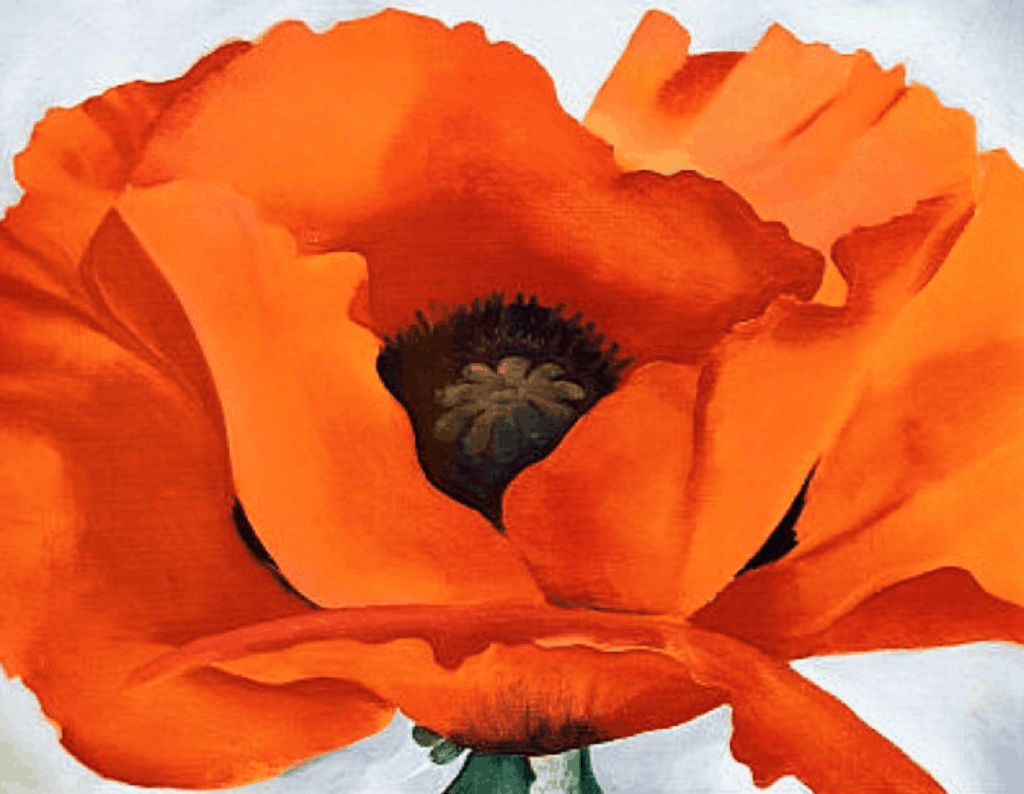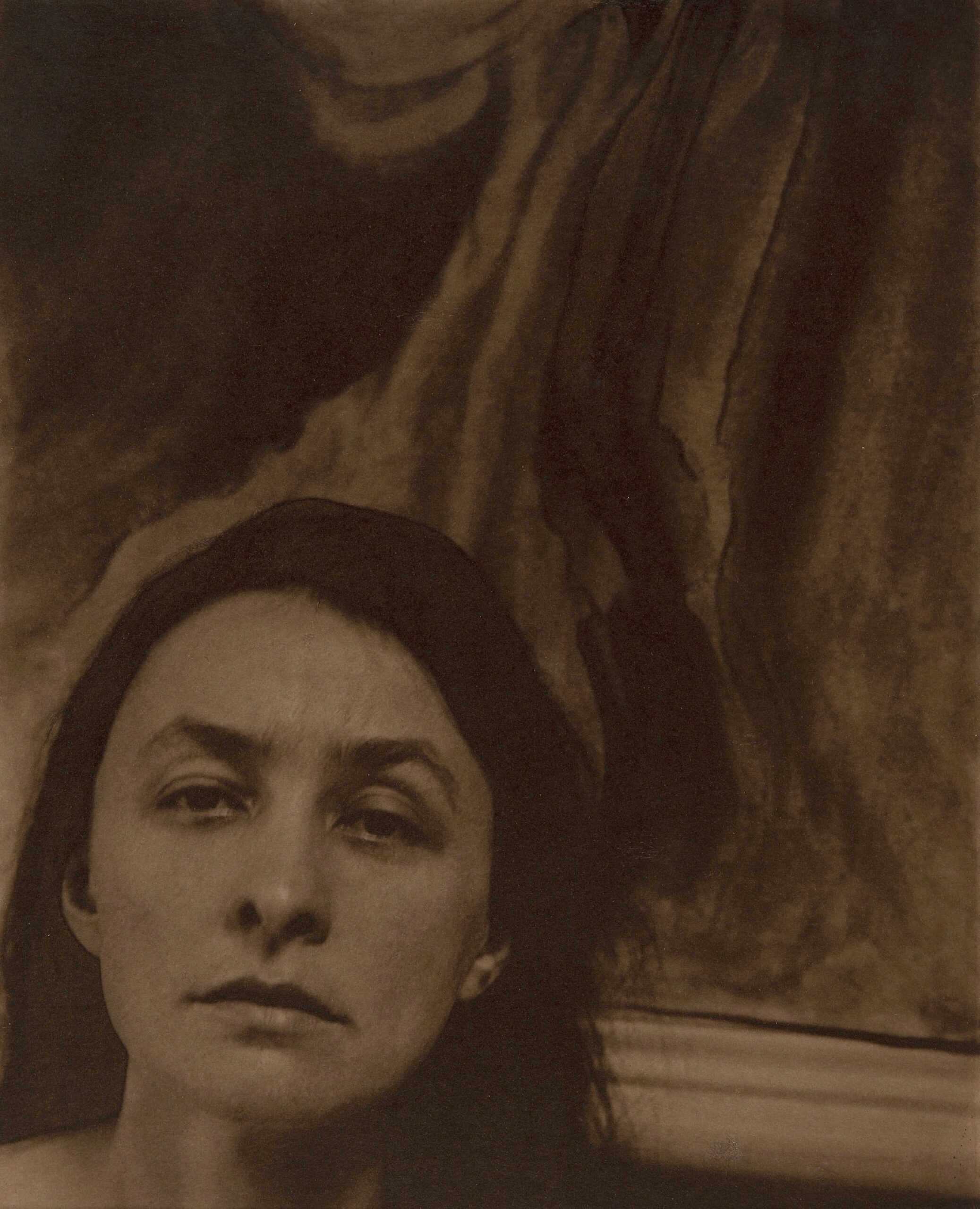In a world that seems to show us a magnified reality perhaps the legendary Georgia O’Keeffe taught us to truly see.
It seems like everything around us is moving too fast for genuine observation. With that said there is something to be learned from the art and philosophy of Georgia O’Keeffe. It offers us a compelling invitation to slow down and truly see things for what they really are.
Her massive flowers, sweeping desert landscapes, and bleached animal skulls aren’t merely beautiful images—they’re doorways into a different way of perceiving reality. As I’ve journeyed through my own creative life, O’Keeffe’s words and work have repeatedly called me back to what matters most: authentic vision and the courage to express it.

The Art of Seeing
Nobody sees a flower—really—it is so small—we haven’t time, and to see takes time, like to have a friend takes time.
Georgia O’Keeffe
This simple observation cuts to the heart of our modern condition. How often do we truly see what surrounds us? How frequently do we move through our days on autopilot, missing the extraordinary details in ordinary moments?
O’Keeffe’s magnified flower paintings serve as both art and instruction—they compel us to notice what we’ve overlooked. By enlarging a single bloom until it filled an entire canvas, she transformed the familiar into something strange and wonderful.
If I could paint the flower exactly as I see it, no one would see what I see because I would paint it small, like the flower is small….So I said to myself—I’ll paint what I see—what the flower is to me, but I’ll paint it big and they will be surprised into taking time to look at it.
I’ve tried to apply this principle to my own life, deliberately pausing or intentional noticing to examine what I might otherwise rush past. The intricate veining on a fallen leaf, the complex architecture of a spider’s web, the subtle variations of light as afternoon shifts toward evening—these observations don’t just make my days richer; they fundamentally change how I move through the world.
Finding Your Own Voice
“I have things in my head that are not like what anyone has taught me,” O’Keeffe confessed. Anyone who has ever felt the tension between external expectations and internal truth would resonate deeply with this statement. Throughout her career, O’Keeffe resisted categorization and rejected the interpretations others imposed on her work, particularly the sexualized readings of her flower paintings.
O’Keeffe once said –
Men put me down as the best woman painter. I think I’m one of the best painters.
This quiet confidence in her own vision enabled her to create a body of work utterly unique in American art. She didn’t set out to break conventions—she simply followed her distinct perception to its natural conclusion.
What strikes me most about O’Keeffe’s independence is that it wasn’t born from rebellion but from necessity.
I’ve been absolutely terrified every moment of my life and I’ve never let it keep me from doing a single thing I wanted to do.
Her courage wasn’t fearlessness but the determination to honor her vision despite fear.
I find myself returning to this example whenever doubt creeps in about my own creative direction. The question isn’t whether others will approve but whether I’m being faithful to what I uniquely see and understand. As O’Keeffe put it, “I decided I was a very stupid fool not to at least paint as I wanted to.”

The Sanctuary of Solitude
Perhaps what distinguishes O’Keeffe most profoundly was her embrace of solitude. While many feared isolation, she cultivated it as essential to her art and well-being. After discovering the New Mexico desert in 1929, she gradually made it her permanent home, living alone at Ghost Ranch and later in Abiquiu.
I think it’s so foolish for people to want to be happy. Happy is so momentary—you’re happy for an instant and then you start thinking again. Interest is the most important thing in life; happiness is temporary, but interest is continuous.
She proclaimed as depths of wisdom seemed to pour out of her much like the magic on her canvases. It seemed through her art she had discovered the secret to life.
This perspective offers a refreshing counterpoint to our culture’s relentless pursuit of happiness. O’Keeffe found something more sustainable in the focused attention she brought to her surroundings. Her solitude wasn’t emptiness but fullness—space filled with close observation, connection to landscape, and creative response.
I’ve found this to be true in my own experience. My richest moments often come not from social stimulation but from quiet hours of paying attention. Like O’Keeffe, I’ve discovered that “where I was born and where and how I have lived is unimportant. It is what I have done with where I have been that should be of interest.”
The Power of Place
O’Keeffe’s relationship with the New Mexico landscape teaches us about the profound impact of place on our inner lives. “When I got to New Mexico, that was mine,” she declared. “As soon as I saw it, that was my country.”
This wasn’t mere appreciation of scenic beauty but a deep recognition—a feeling of having found the external landscape that matched her internal one. The desert’s stark forms, dramatic light, and expansive horizons provided both subject matter and spiritual nourishment. “Such a beautiful, untouched lonely feeling place, such a fine part of what I call the ‘Faraway,'” she wrote. “It is a place I have painted before… even now I must do it again.”
O’Keeffe’s devotion to this particular landscape reminds me to consider my own relationship to place. Where do I feel most authentically myself? Which environments clarify rather than cloud my vision? These aren’t idle questions but essential considerations for anyone seeking to live and create with integrity.
Simplicity as Strength
“Nothing is less real than realism,” O’Keeffe observed. “Details are confusing. It is only by selection, by elimination, by emphasis, that we get at the real meaning of things.” This commitment to essential forms defined her artistic approach and personal aesthetic.
Looking at her paintings—whether flowers, bones, or landscapes—we see a rigorous distillation. She stripped away the extraneous to reveal underlying structures and relationships. This wasn’t minimalism as fashion but as philosophy—a belief that truth emerges through simplification.
Her personal style reflected the same principle. The black and white clothing, the minimal accessories, the unadorned living spaces—all expressed her conviction that “where I was born and how I have lived is unimportant. It is what I have done with where I have been that should be of interest.”
I find myself increasingly drawn to this aesthetic sensibility, not just in art but in everyday choices. What can I eliminate? What deserves emphasis? How might clearing away the unnecessary reveal what truly matters? As O’Keeffe demonstrated, simplicity isn’t deprivation but clarity—a means of seeing and being seen more truthfully.
Aging with Integrity
O’Keeffe lived to be 98 years old, painting well into her eighties until failing eyesight forced her to stop. Her approach to aging offers a powerful example of adapting to limitation without surrendering purpose.
“Interest is the most important thing in life,” she maintained, and this orientation carried her through the inevitable losses that come with longevity. When she could no longer paint as she once had, she worked with assistants to create sculptures that translated her visual ideas into three dimensions.
What impresses me most about O’Keeffe’s later years is her refusal to become a caricature of her younger self. She continued evolving, responding to new circumstances while maintaining her essential character. “I’ve been absolutely terrified every moment of my life,” she admitted, “and I’ve never let it keep me from doing a single thing I wanted to do.”
As I consider my own journey through time, I’m inspired by her example of continuous engagement—not clinging to youth but embracing each phase with curiosity and commitment.

Seeing Our Own Way
“I found I could say things with color and shapes that I couldn’t say any other way—things I had no words for,” O’Keeffe explained. This, perhaps, is her most profound legacy—the reminder that each of us perceives the world in ways that cannot be fully translated or explained.
Her life and work stand as testimony to the value of honoring our unique vision, whatever form it takes. “Whether you succeed or not is irrelevant,” she insisted. “There is no such thing. Making your unknown known is the important thing.”
In a culture that often prioritizes conformity and comprehension, O’Keeffe reminds us that some truths can only be glimpsed through individual perception. Our task isn’t to see what others see but to develop the courage to express what we alone can perceive.
As I continue my own creative journey, I return often to her simple directive: “Fill a space in a beautiful way.” Whether that space is a canvas, a home, a relationship, or a life, the challenge remains the same—to see clearly, select carefully, and express authentically what matters most to us.
In O’Keeffe’s words and images, I find permission to trust my own eye and voice. Perhaps this is her greatest gift—not just her magnificent paintings but the example of a life lived in unwavering fidelity to personal vision.
Another icon worth learning more about is the literary great Susan Sontag.







